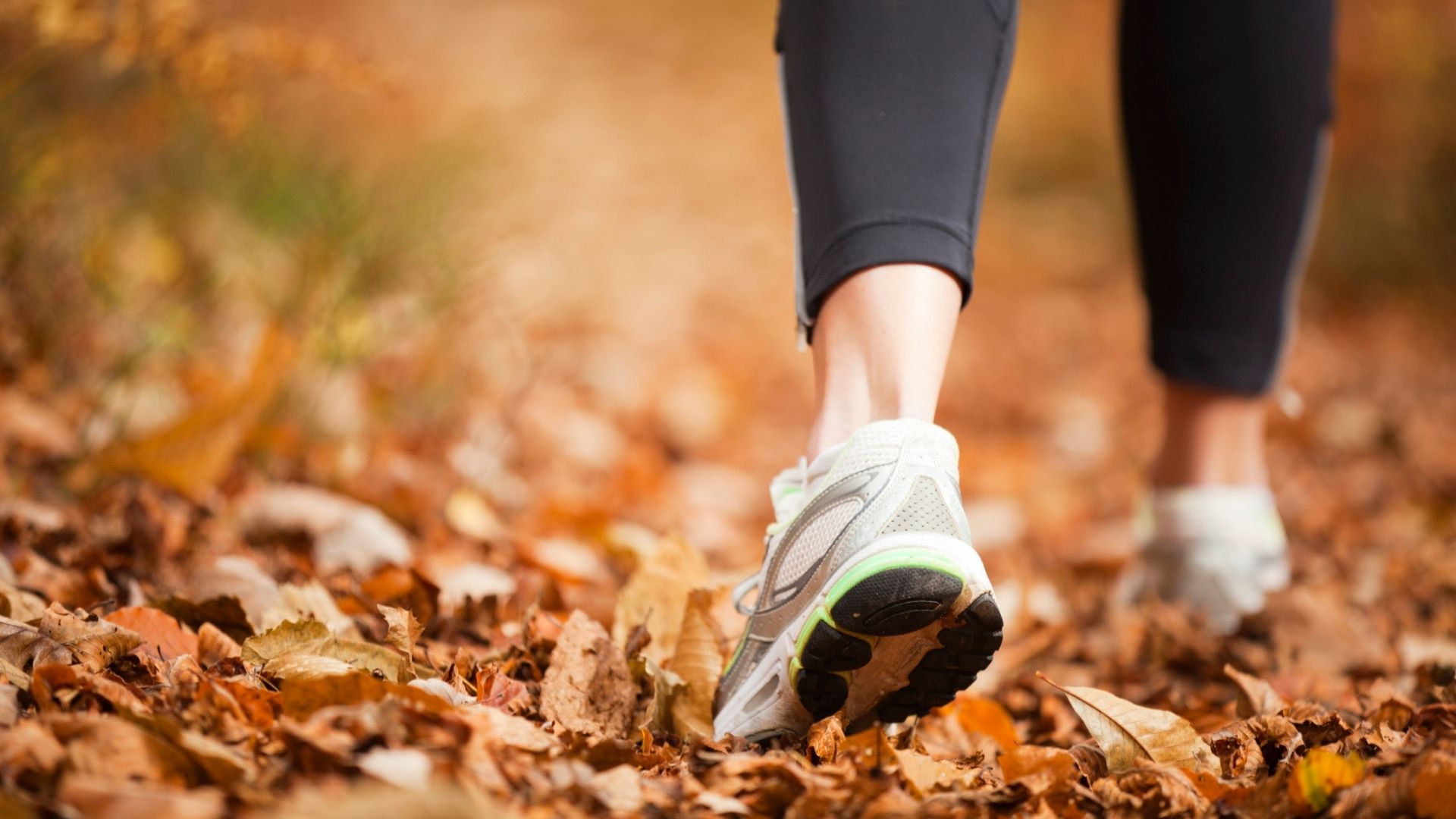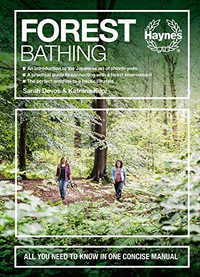What is forest bathing? Here's how it can lower stress and boost immunity
Forest bathing is a Japanese tradition with positives for your mind and body—this is how to reap the benefits...


Lauren Hughes
When we say forest bathing, we don't mean relaxing in a hot tub at a woodland Airbnb. This is actually a nature-based wellness ritual that's been popular in Japan for decades—and it comes with a whole host of benefits. The benefits of shinrin-yoku, as the practice is known in Japan, include boosted mood, eased stress levels, and a strengthened immune system.
If you're keen to immerse yourself in greenery and experience this wonderful kind of ecotherapy, we've called on the experts to share everything you need to know about forest bathing. We'll explore what nature therapy is and the key benefits, as well as where to do it, how long for and how often. There are also some very handy tips for beginners.
However, it's far simpler than it sounds—all you really need to do is lace up your best walking shoes, venture out to your nearest woodland area, and get acquainted with the sights, smells, and sounds of the forest. Just like yoga for beginners, you'll be surprised by the positive impact it has on your mind and body...
What is forest bathing?

Forest bathing is essentially a mindfulness practice that involves surrounding yourself in nature to reduce anxiety and promote better health, with similar benefits to cold water swimming, another effective form of nature therapy. Forest bathing was first coined in the 1980s, and derives from Japan where it is known as 'shinrin-yoku'. "However, it is more than a walk in the woods," says Karen Liebenguth, an eco-therapist and founder of Green Space Coaching. "It’s consciously immersing yourself in nature and being aware of the sights, sounds, and smells of the forest."
Indeed, forest bathing can mean many things. "It is spending time with trees, without an agenda or time pressure," explains Anna Neubert-Wood, founder of WanderWomen. "It is like meditation, taking some time out, without distractions. Slowing down our busy minds, and letting nature help us slow down and relax. It's the antidote to doom scrolling and desk work.
"Forest bathing can involve sitting, lying, or standing with trees, and checking in on yourself—how you are feeling, what might be going on right now for you, and noticing your breathing." If you've ventured out and felt a bit wobbly, here are some breathing techniques for anxiety.
What are the benefits of forest bathing?
There are multiple benefits to forest bathing. They include:
Sign up to our free daily email for the latest royal and entertainment news, interesting opinion, expert advice on styling and beauty trends, and no-nonsense guides to the health and wellness questions you want answered.
- Greater mental clarity
- Boosted mood
- Lower blood pressure
- Eased stress levels
- Stronger immune system
"When we spend time in the forest we slow down naturally—which lowers the heart rate, blood pressure, and stress hormone levels, including cortisol and adrenaline," says Liebenguth. "As the body softens, the nervous system calms down and we feel more relaxed, grounded—in the body versus in the head—calm and more confident about ourselves and life. Being in nature also strengthens our immune system, improves mood, and reduces feelings of isolation.
"Immersing yourself in the forest can help you relax deeply and unhook from devices and from an often highly stimulated, technology-driven life. As human beings, we long to come back to our senses, to experiences that allow us to feel a connection with the world. The forest ignites and stimulates us but it has a different effect on us than the stimuli of everyday life. Being among trees allows us to just be. Some attention requires mental effort and concentration—we need to focus hard to process information and to stay with a task, for example at work. The forest, by contrast, captures our attention involuntarily, it happens effortlessly and so provides what is called a ‘restorative environment’." Additionally, wandering through the woods also harnesses the health benefits of walking.
How to find forest bathing near you
For Liebenguth, the answer is really simple. "Any forest near you—big or small—will do," she insists. Neubert-Wood agrees, "A big lush forest is what many have in mind, but don't let it be a barrier if you don't have that near where you are. A local park with trees will do, look around you—might there be a cluster of trees in the local golf course? In a local park? Even just one tree can be enough to connect and slow down with."
What's more, you don't need to be in woodland to do forest bathing. "There is also a distinct difference between ‘nature’ in general and a forest in particular," says Katriina Kilpi, co-author of Forest Bathing. "Nature can include many environments. Imagine a park, country road, cut grass, or crops growing."
If you're based in the US, the Forest Service's website can help you discover forests or grassland to explore. Similarly, if you're in the UK, the National Trust's website has a guide to forest bathing on their website, as well as how to find a woodland area near you. Forestry England also has an assortment of information.
Forest bathing tips for beginners

- Ease in—"if you are new to forest bathing, start with 10 to 20 minutes," suggests Liebenguth. "Then extend the time you spend forest bathing. As is with any new practice, it’s always wise to build it up."
- Take it step-by-step—"find a suitable location that feels good and safe to you," shares Neubert-Wood. "Sit or stand with your back to a tree, and feel supported by it. Close your eyes if you feel comfortable doing so. Breathe deeply to connect with your body and this moment."
- Be practical—"let someone know where you are," recommends Neubert-Wood. "This is so you can feel relaxed enough to turn your phone off or on 'flight mode', since you don't want to be disturbed during your forest bathing time."
- Notice sensations—"pay attention to the breeze, wind, sunlight on your skin," explains Neubert-Wood. "Do you feel warm or cold? Can you hear noises? What can you smell? Simply check in with yourself. Note how your breathing might slow down and what your overall wellbeing is like."
How long should you forest bathe for?
"There is no hard and fast rule here," insists Liebenguth. "Bathe in the forest for as long as you like. If you are new, perhaps start small and build up your practice."
Neubert-Wood adds, "sometimes you can feel relaxed and re-centered after five to 10 minutes. On other occasions, it's wonderful to be able to give yourself a bit longer, like 30 to 60 minutes."
How often should you forest bathe?
"As often as you like and feels beneficial to you," recommends Liebenguth. "Listen to your body, mind and heart and notice what it feels like when you immerse yourself in the forest and all live around you."
Neubert-Wood insists, "there should be no should's with forest bathing. It's a tool to calm, destress, refocus and re-center you. If it works for you, enjoy it as often as you like. Pausing, deep breathing, taking a break from screens, and being with nature is always beneficial." Indeed, while the best meditation apps are great, it's better to enjoy the silence when you head to the forest.
Forest bathing books

Forest Bathing: All You Need To Know In One Concise Manual | Sarah Devos and Katriina Kilpi | RRP: $12.29 / £9.61
Provides specific advice on how to approach the concept of forest bathing, including where you should be, the best times to choose and all the things you can expect to experience.

Your Guide to Forest Bathing: Experience the Healing Power of Nature | M. Amos Clifford | RRP: $14.29 / £11.18
Discover a path to beginning your own forest bathing practice with one of the world's leading experts on the topic. Features space for journal entries and reflections.

Into the Forest: How Trees Can Help You Find Health and Happiness | Dr Qing Li | RRP: $14.76 / £11.54
Dr Quin Li, an immunologist and forest medicine expert, reveals the unprecedented benefits of the great outdoors through the exploration of cutting-edge research and emerging science.

Lauren is a freelance writer and editor with a decade of print and digital journalism experience. While she specialises in covering health and wellness topics - ranging from nutrition and fitness, to women’s health conditions and mental wellbeing - she has written across a diverse range of lifestyle topics, including fashion, beauty, homes, royals and travel.
In addition to writing for Woman & Home and sister title Homes & Gardens, Lauren's work has also been published by Women’s Health, The Times, Daily Telegraph, Elle, Cosmopolitan, The Guardian, Marie Claire, Body + Soul, Stylist, Glamour, Grazia, Red, Dazed Digital, Yahoo Life, The Sun’s Fabulous, Get The Gloss and Hello! among others.